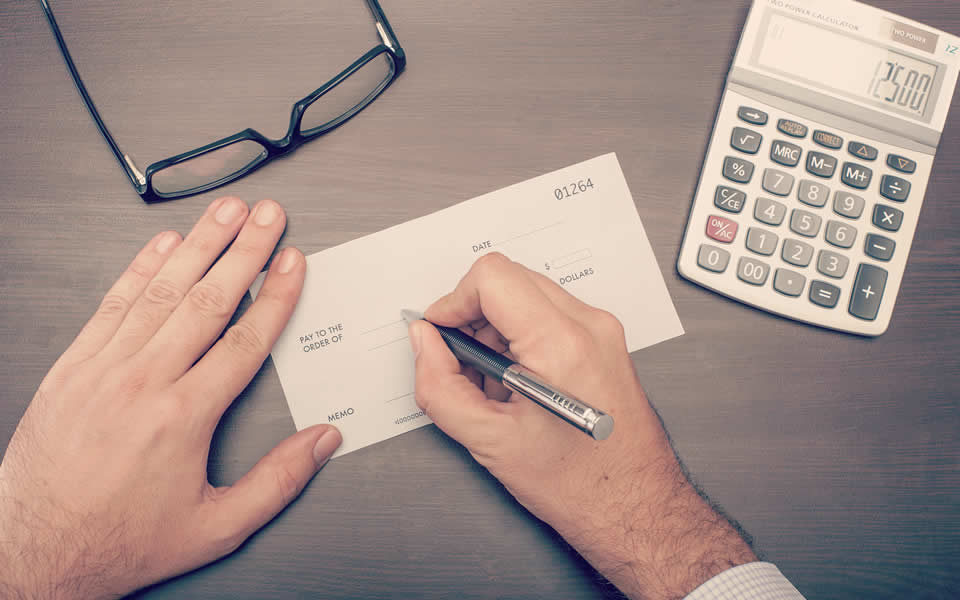Tools of the Trade: What Every Business Should Consider in Protecting Cash
By Arlen Lasinsky, CPA, CFE, CFF, CVA, CTP, Director, Advisory Services
Although virtual currency is coming into the business environment and is being used to pay for goods and services, let’s face it, “Cash is King!” This is why con artists, scammers and other fraudsters spend so much time figuring out how to take your cash away from you. Whether via fraudulent check writing, skimming cash from your business, or manipulating accounts receivable, to name just a few, it is imperative that your cash is protected.
This article will primarily focus on check and ACH fraud and protections that should be employed to protect and prevent your cash from being separated from you. Note that fraudsters will not be deterred; however, by implementing the appropriate controls and safeguards at your company, the likelihood of fraud occurring should be minimized. Of course, as with any business decision, cost should be weighed against the potential benefits. This article will address protections available at a low to moderate cost.
Check Fraud
Check fraud includes but is not limited to:
- Paperhanging or Check Kiting – Funds are not available to cover checks written on the account;
- Counterfeiting – Checks are created using scanners and printers to draw against the victim’s account;
- Check Washing – Checks are treated with solvents to remove original information and replaced with fraudulent information;
- Forgery – Checks are signed by an unauthorized party using the authorized signer’s name; and
- Check Alteration – The payee, amount or date on an authorized check is altered.
According to the 2021 AFP® Payments Fraud and Control Survey Report (“Survey”) published by the Association for Financial Professionals, 74% of the organizations polled were targets of payment scams. Additionally, fraud activity pertaining to ACH debits was 34% in 2020, up from 33% in 2019. The Survey also reported that fraudsters are focusing more time on manipulating ACH payment methods than checks or wire transfers. This observation suggests that perpetrators are developing more advanced ways of altering ACH transactions.
According to the American Bankers Association 2019 Deposit Account Fraud Survey, in 2018 American banks prevented check fraud against deposit accounts in the amount of $22.3 billion.
Several tools are available to help you avoid becoming a victim of check or ACH fraud.
Payee Positive Pay (“Payee PP”)
Most banks offer Payee PP to their customers, enabling customers to send an electronic file to the bank before they issue checks. This communication contains the check number, amount, date, and payee. When checks are presented for payment to the payor bank, the bank will match the check to the electronic file sent by the customer. If the check does not match the electronic file information, the bank will communicate with the customer to ascertain if the exception is a legitimate alteration to the check. If it is a true exception, where the check has been altered, the check will be returned to the depository bank unpaid. Payee PP is not 100% foolproof, however. Fraudsters can still manipulate checks to circumvent the control, for example by adding a payee name to the check. By adding a payee name to the check enables a fraudster to negotiate the check.
Reverse Positive Pay
This bank product is used by companies that are smaller and do not have the check volume of larger companies. Instead of an electronic file being sent to the bank, the customer proactively reviews checks being presented for payment on a daily basis. After comparing presented checks to the company’s check file, any exception must be communicated by the bank customer that day.
Security Features
While the volume of electronic transactions is increasing each year, checks are still in use and will remain in use for the foreseeable future. In order to protect checks from being manipulated or altered, they should contain security features to better prevent fraud. Below are a few of the most common check security features, although there are many others as well.
- Warning Borders – This informs the recipient that the check contains security features. This both reassures the recipient that the check is secure and acts as a deterrent to fraud. Fraudsters would rather manipulate a check with no security features than a check that has them.
- Void Pantograph – This security feature prevents a check from being scanned or duplicated by photocopying. Any attempt to reproduce the check by these means reveals the word “void” to prevent use of the attempted duplicate check.
- Watermarks – These designs and images are imbedded into the check stock and are visible when held to a light. This watermark gives immediate assurance that the check is authentic.
- Custom Pantographs – These are designs, spirals, lines or other patterns on the back of a check that prevent replication.
- Chemical Reactive Check Stock – Checks produced with this paper stock will react to chemicals or solvents applied to the check, to prevent check washing. The check will change colors, produce wording such as “void,” and will thwart the chemical washing attempt.
- Microprinting – Microprinting makes it more difficult to create imposter checks by using a font that is too small to replicate. Typically the signature line on checks is actually composed of microscopic words such as “authorized signature” or “microprint security” that are undetectable by the naked eye. Microprinting may also be utilized on the borders of the check.
ACH
ACH, or Automated Clearing House, is an electronic network used to move money between banks. According to the Federal Reserve, ACH debit transfers accounted for $16.6 billion in 2018, outpacing check payments of $14.5 billion. ACH blocks and filters are tools to prevent a compromise of such transactions.
Utilizing ACH’s is faster and less costly than issuing checks, but there are risks that are associated with employing ACH’s. The information below adds an additional layer of security and will protect your cash from being removed from your bank account by a fraudster.
ACH Blocks – Rather than using checks to pay for goods and services, an ACH is used. Using ACH reduces the possibility of check fraud, but does not eliminate ACH fraud. There is less of a chance of check fraud when fewer checks issued by a company. However, with fewer checks being issued means more payments are made via ACH. An ACH block is a tool that blocks all electronic debits from being paid out of an account. However, an ACH block also stops authentic electronic payments from being made.
ACH Filter – An ACH filter allows for electronic debits that have been preauthorized either by payee or amount. The bank allows for such preauthorized debits to be charged against the bank account.
Check and ACH fraud has been around for years and is not going to stop any time soon. Companies have access to tools to prevent them from becoming a victim. By protecting their checks and ACH payments with controls, the better the probability of not being another statistic. The more controls used on a check or in the procedures internally performed for payments via check or ACH, the better the chances of circumventing the separation of cash from your organization.









